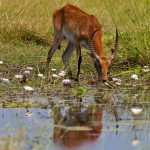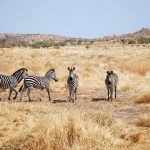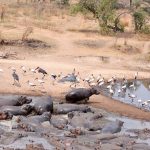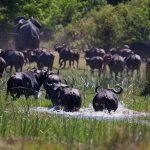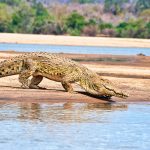Ruaha National Park is the largest national park in Tanzania. It covers an area of about 13,000 square kilometres and is located in the middle of Tanzania about 130 kilometres from Iringa. The park is part of a more extensive ecosystem which includes Rungwa Game Reserve, Usangu Game Reserve, and several other protected areas.
The name of the park is derived from the Great Ruaha River, which flows along its South-Eastern margin and is the major focus for game-viewing. The park can be reached by car via Iringa and there is an airstrip at Msembe, where the park headquarters are located.
[smart-grid row_height=”240″ mobile_row_height=”170″ last_row=”justify” margins=”15″ captions=”false” title=”false”]
- Ruaha National Park
- Ruaha National Park
[/smart-grid]
Ruaha National Park has a bimodal pattern of rain forest: the ‘short rain’ season lasts from November to February, while the ‘long rain’ season occurs in March and April; the park’s dry season lasts approximately from June to October.
Ruaha is Tanzania’s “birds’ paradise,” with more than 571 species as well as a significant number of migrating birds from both within and outside Africa.
Ruaha is believed to have a higher concentration of elephants than any other National Park in East Africa. It is also a place where magnificent mammals like Kudu, Sable and Roan antelopes can readily be spotted in Miombo woodland. The park is also a habitat for endangered wild dogs. Other animals in the park include lions, leopards, cheetah, giraffes, zebras, elands, impala, bat-eared foxes and jackals.
Apart from large animals, the park is also home to a number of reptiles and amphibians such as crocodiles, poisonous and non-poisonous snakes, monitor lizards, agama lizards and frogs.
Ruaha is characterized by semi-arid vegetation, baobab trees, Acacia and other species. Over 1,650 plant species have been identified in the park.


